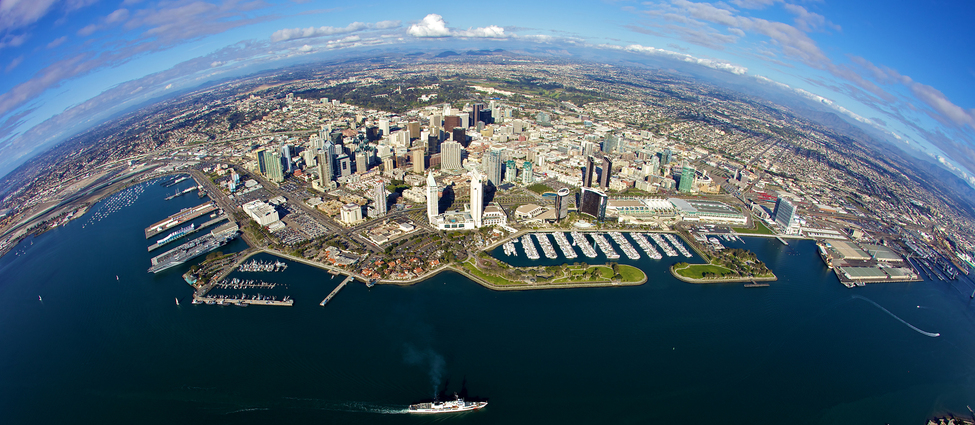

News
From the Road: a note from Stockholm

SAN DIEGO, CA, USA - by Nikia Clarke, director, World Trade Center San Diego
WTC San Diego is on the road again, with a focus on deepening channels of connectivity between global cities around trade, investment, innovation and thought leadership (as well as herring, it turns out).
I spent last week in Stockholm, Sweden, participating in a Brookings/JPMorgan Chase Global Cities Forum. San Diego joined the Global Cities Initiative (GCI) almost four years ago, led by WTC San Diego founding partners—the City of San Diego, San Diego International Airport and the Port of San Diego—and followed by more than 30 other metros. Stockholm is now joining the GCI and drafting its own internationalization strategy. Together with four other GCI representatives, I spoke on panels and participated in working groups convened by Brookings, the Stockholm Chamber of Commerce and CONNECT Sweden to share San Diego’s experience of building a data-driven trade and investment strategy backed by a regional coalition of partners.
And, as is always the case with these Brookings Metro Exchanges, it’s a wonderful opportunity to learn from our peer cities. Philadelphia’s Economy League, together with their very active WTC, just launched a regional export plan, leveraging service provider networks to reach exporting firms. In London, the Mayor’s office and London & Partners are linking with private sector multinationals to create opportunities for 800 SMEs in new markets. Minneapolis-St. Paul has built strong regional economic development infrastructure that drives significant foreign investment to their bi-city region. World Business Chicago has been leading an effort among dozens of counties to move from competition to collaboration in a metro region that is one of the country’s largest foreign investment destinations.
At the close of the forum, the Chamber—along with the Mayor, Governor, Airport Authority, and other public and private sector senior leadership from the region—launched Team Stockholm to drive the effort forward. As the CEO of AstraZeneca—an English-Swedish firm that is the seventh largest pharmaceutical company in the world—spoke to the group about the importance of global connectivity, on the other side of the world, his company inked a deal with San Diego Human Longevity Inc. to sequence more than 500,000 genomes and analyze samples from clinical trials. Indeed, competitiveness is all about connectivity.
So how do we continue to grow this kind of connectivity here in San Diego? Turns out Stockholm is the perfect place to reflect on this question, which is why innovation economy experts, like our own Dr. Mary Walshok, have been building linkages between our two regions for decades. Stockholm and San Diego have a lot in common: we are both metro regions of 2-3 million with world-class research ecosystems, strong life sciences, telecomm and technology sectors and we happen to be two of the top three most patent intense regions in the world. It is why as you drive down the road you see big names in our region that are also big names in Sweden: Thermo Fisher, Kyocera, Trinity Biotech, Ericsson, JLabs, among others.
And in both our cities, so much of the innovation ecosystem is driven by SMEs—which in both San Diego and Stockholm make up around 95 percent of all companies—and the ways in which they are able to engage with large firms and global networks. I visited a number of the institutions that incubate, accelerate and commercialize technology in the region and there is much we can learn from Stockholm. The Karolinska Innovation Institute spins life sciences and pharmaceutical discoveries out of the university research hospital. Sting—a city-university-private sector collaboration that runs a network of incubators, accelerators and co-working spaces in the region—is launching a new digital health accelerator program that will launch firms into international markets.
EpiCenter is an innovation house founded as a temporary experiment in a downtown high rise awaiting redevelopment last year. Now it has 600 members—large tech executives, entrepreneurs and everything in between—who run incubators, accelerators, hackathons and labs. As companies grow and scale they move through the flexible, diverse office spaces throughout the building. It will anchor plans for an expansive downtown redevelopment with hotels, restaurants and office space all linked by aerial walkways. Too cool, right?
I had the opportunity to continue these conversations with a brief stopover in London on the way home to visit co-working spaces, tech hubs and San Diego company Cubic’s new transit innovation center. Cubic already moves 10 million people around London every day as the operator of the Underground’s oyster card payment system. But here they are working with universities, transport providers and entrepreneurs on what’s NEXT for the ever smarter, safer cities of tomorrow? (hint: it might involve talking holograms and buying your ticket with the veins in your hand)
One of WTC San Diego’s primary mandates is to grow opportunities both for local firms in overseas markets, and for foreign ones investing in our region. To this end we’ve spoken with more than 400 investors in Japan, taken a group of water tech companies to England and France and are about to select our 2016 cohort of MetroConnect firms. As we reflect on what’s next for our region in terms of boosting our global competitiveness, it is clear that international innovation networks are critical. Certainly some great lessons were taken from this trip: creating great spaces, collaborating with diverse partners and being a little wild and very flexible.
As always, at each stop we were sure to leave behind one of San Diego’s best exports: Stone craft beer, this time the Bitter Chocolate Oatmeal Stout. No wonder they like us.
Cheers to Stockholm and London, and see you soon, San Diego.
To read the original article, click on the source link below: